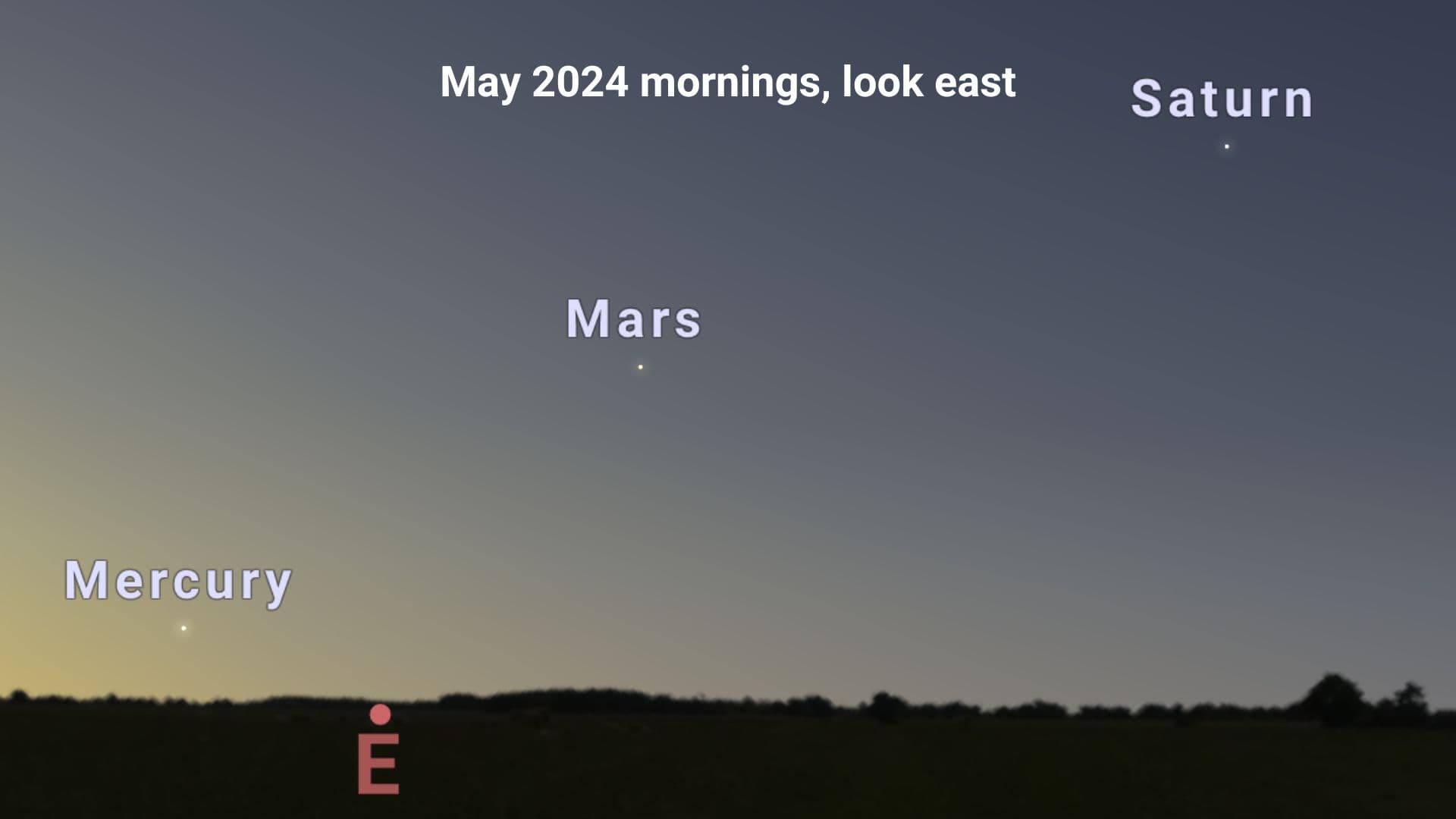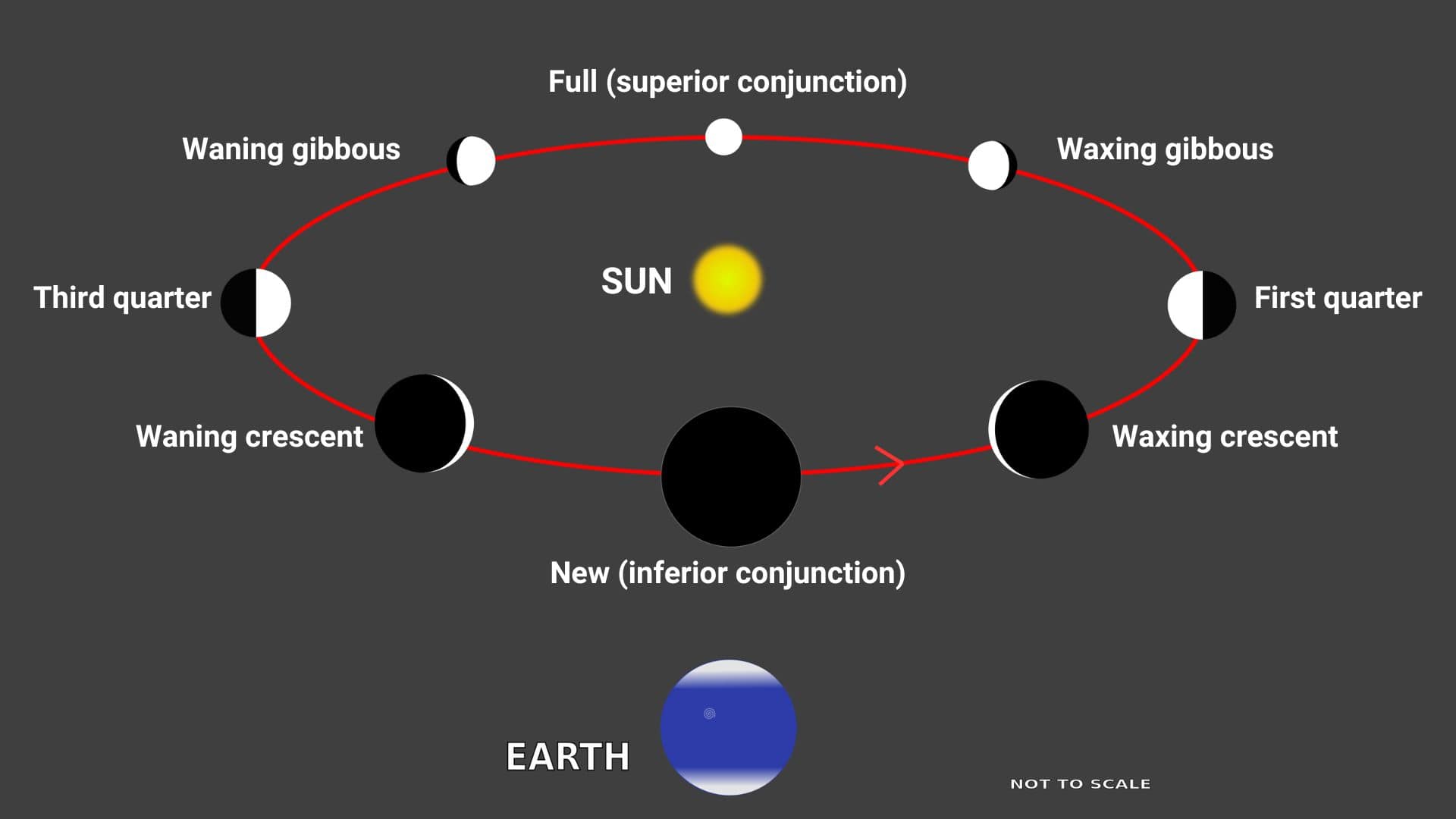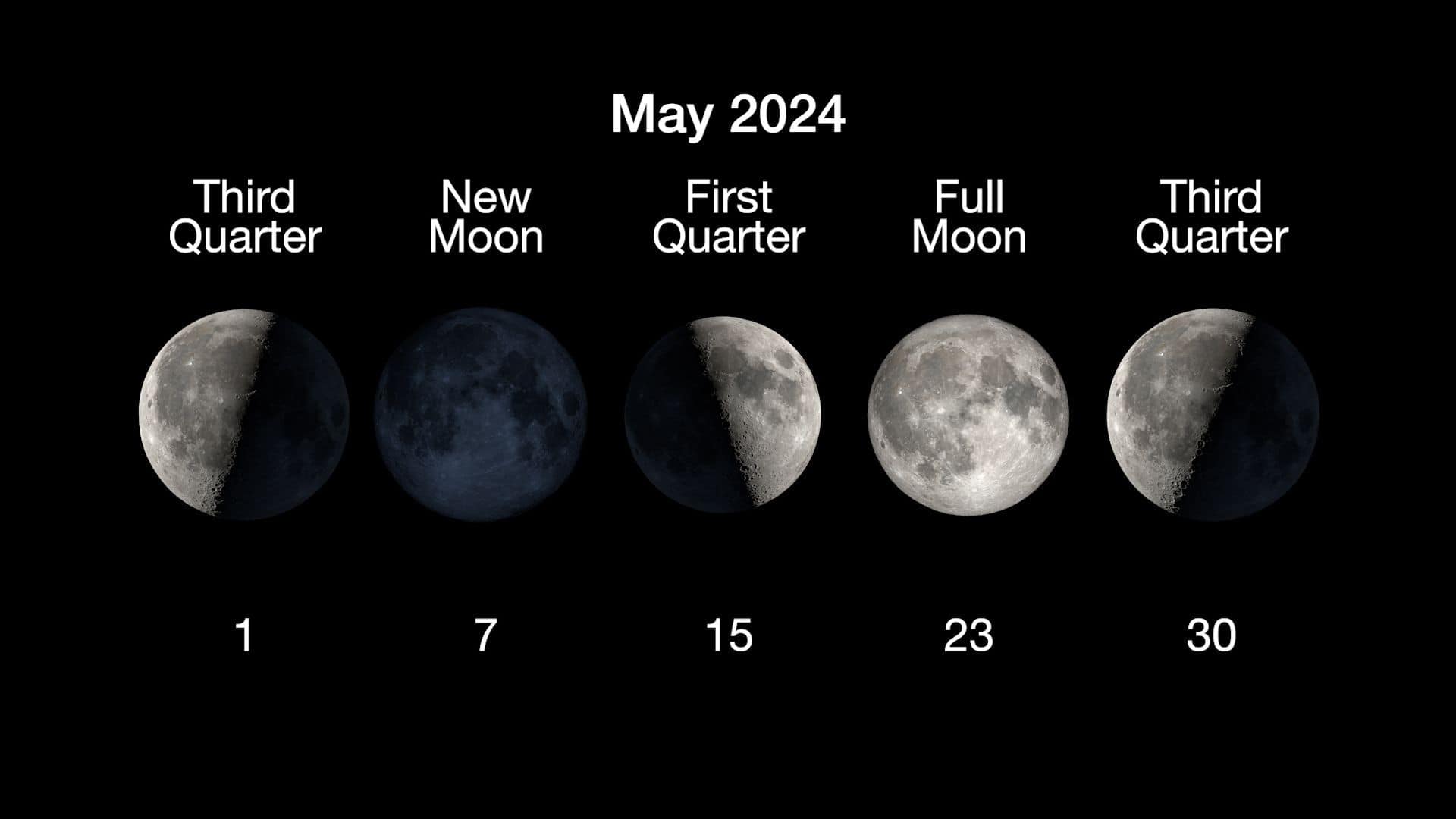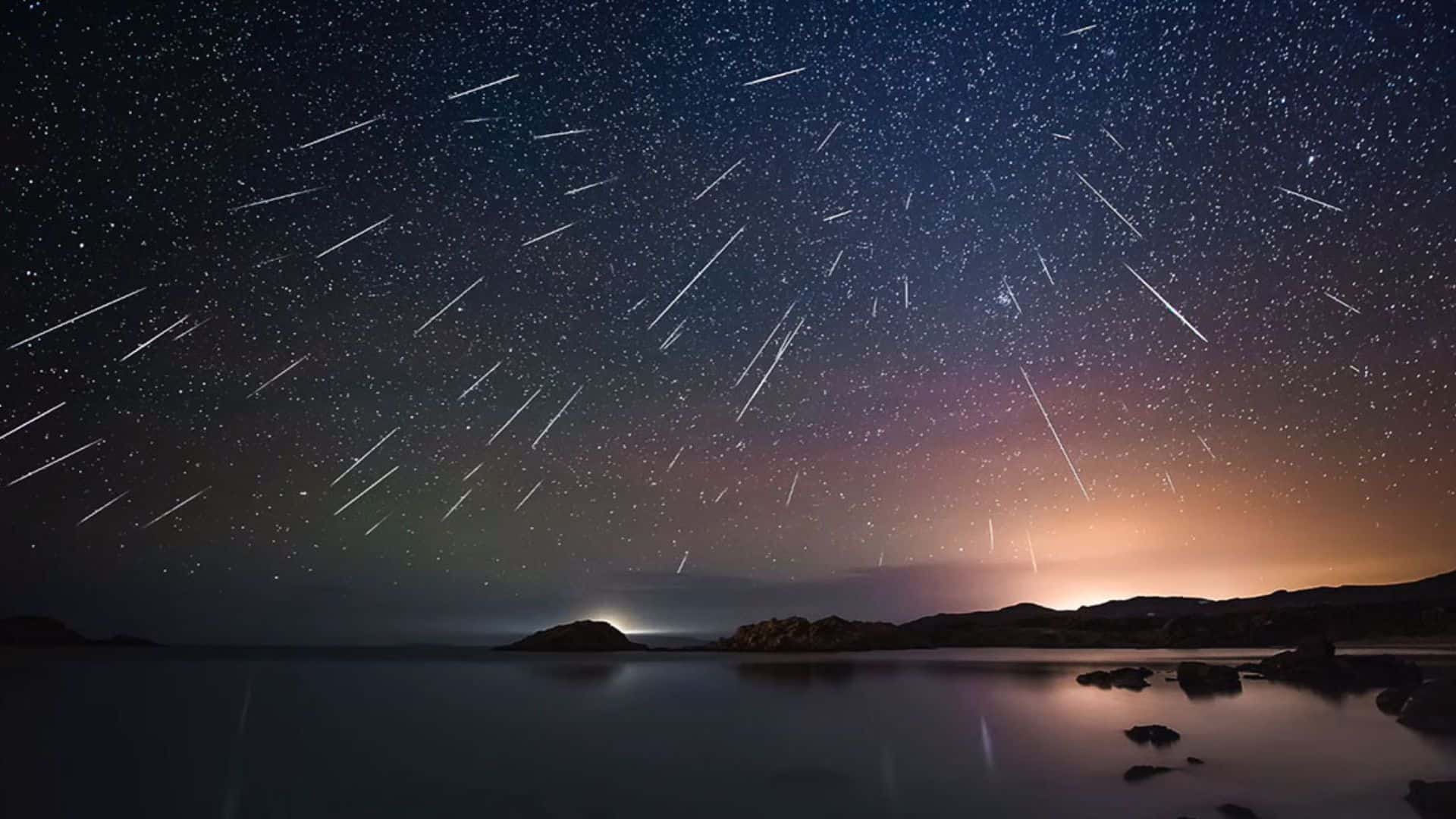The Quadrantid meteor shower will start on December 28 and end on January 12 in 2025. The predicted peak of Quadrantids will fall on January 3, 2025 at 16:15 UTC.
The Quadrantid meteor shower is seen every year in early January, when our Earth passes through the debris of dust left behind by the asteroid 2003 EH1 in its orbit, according to NASA. So every Quadrantid meteor is the fragment of asteroid 2003 EH1.
It is considered one of the most prolific meteor showers of the year, along with the Perseids in August and the Geminids in December.
The shower usually produces up to 91 meteors per hour during peak activity under clear, dark skies.
2025 will be a very good year to see Quadrantids as the young waxing crescent moon will set in the evening. So you will get an almost moonless night to observe Quadrantids during the peak activity.
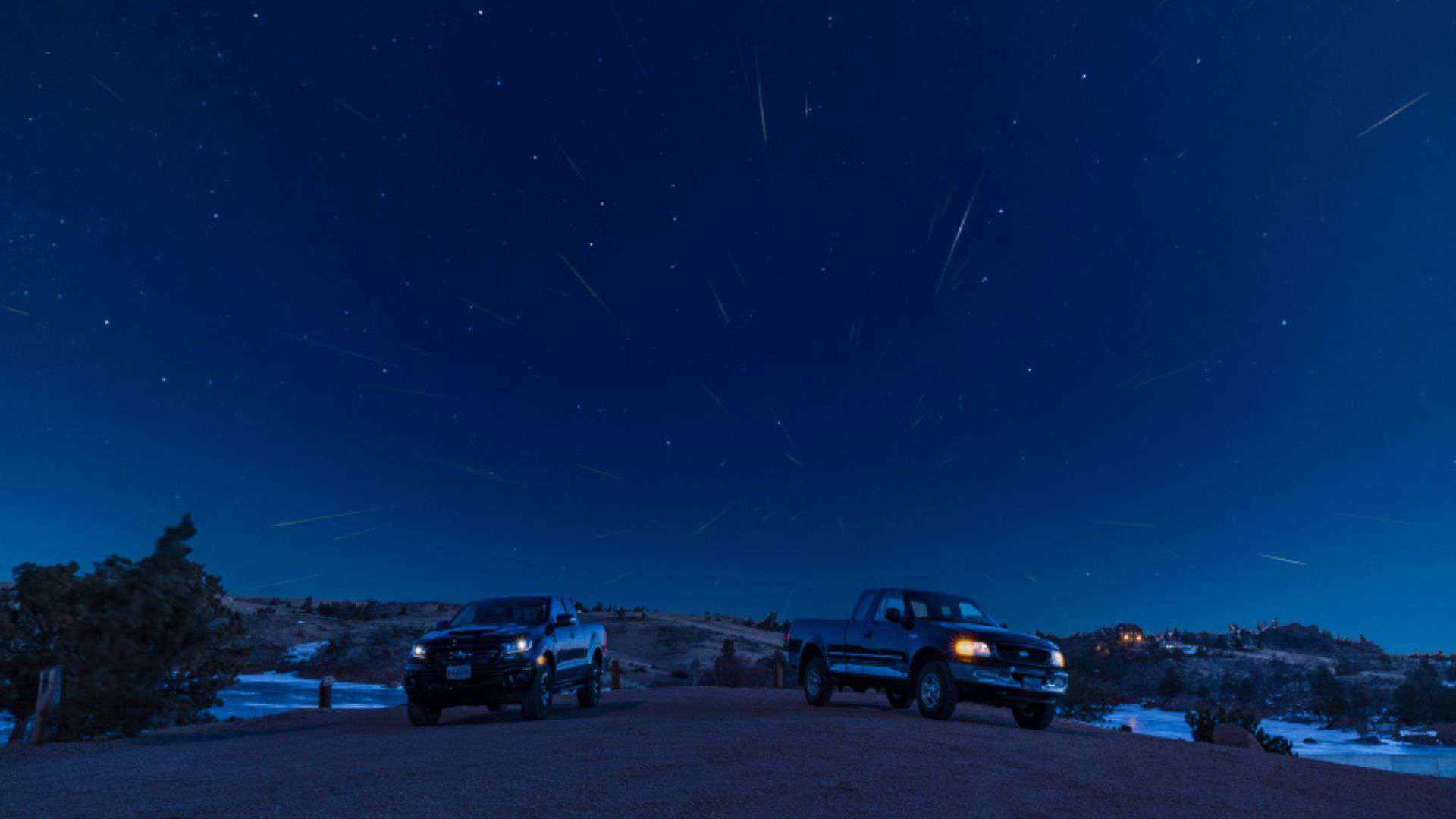
Duration of peak activity
Most of the meteor showers have one or two days of peak activity, making them easier to observe.
However, Quadrantids have a very sharp peak that lasts only a few hours at best, so some observers will miss the peak activity completely while others on another continent may witness an excellent display.
Following the predicted peak, activity rapidly declines to about half the maximum value within four hours.
If the predicted peak is correct, then the observers located in Hawaii, Alaska, the western US, and western Canada will observe an excellent display of Quadrantid meteor shower in 2025.
When to see the Quadrantid meteor shower in 2025
Pre-dawn hours (at around 5 to 6 a.m. local time) of January 3 is the best time to see the Quadrantid meteor shower in 2025.
The point from where the Quadrantid meteor shower radiates in the sky, called the shower’s radiant, rises around midnight and reaches its highest point in the sky at dawn.
The radiant of the Quadrantid meteor shower climbs a decent height above the horizon at around 3 a.m. local time, so I will suggest you start watching Quadrantids (Quadrantid meteors) from pre-dawn hours (at around 3 a.m. local time) and continue it till dawn.
It is hard to observe Quadrantids until midnight as the circumpolar radiant is located very close above the horizon.
The radiant of the Quadrantid meteor shower is circumpolar for the north of 40°N. The radiant being circumpolar means it is located always above the horizon, which never rises nor sets.
Where to look to see the Quadrantid meteor shower
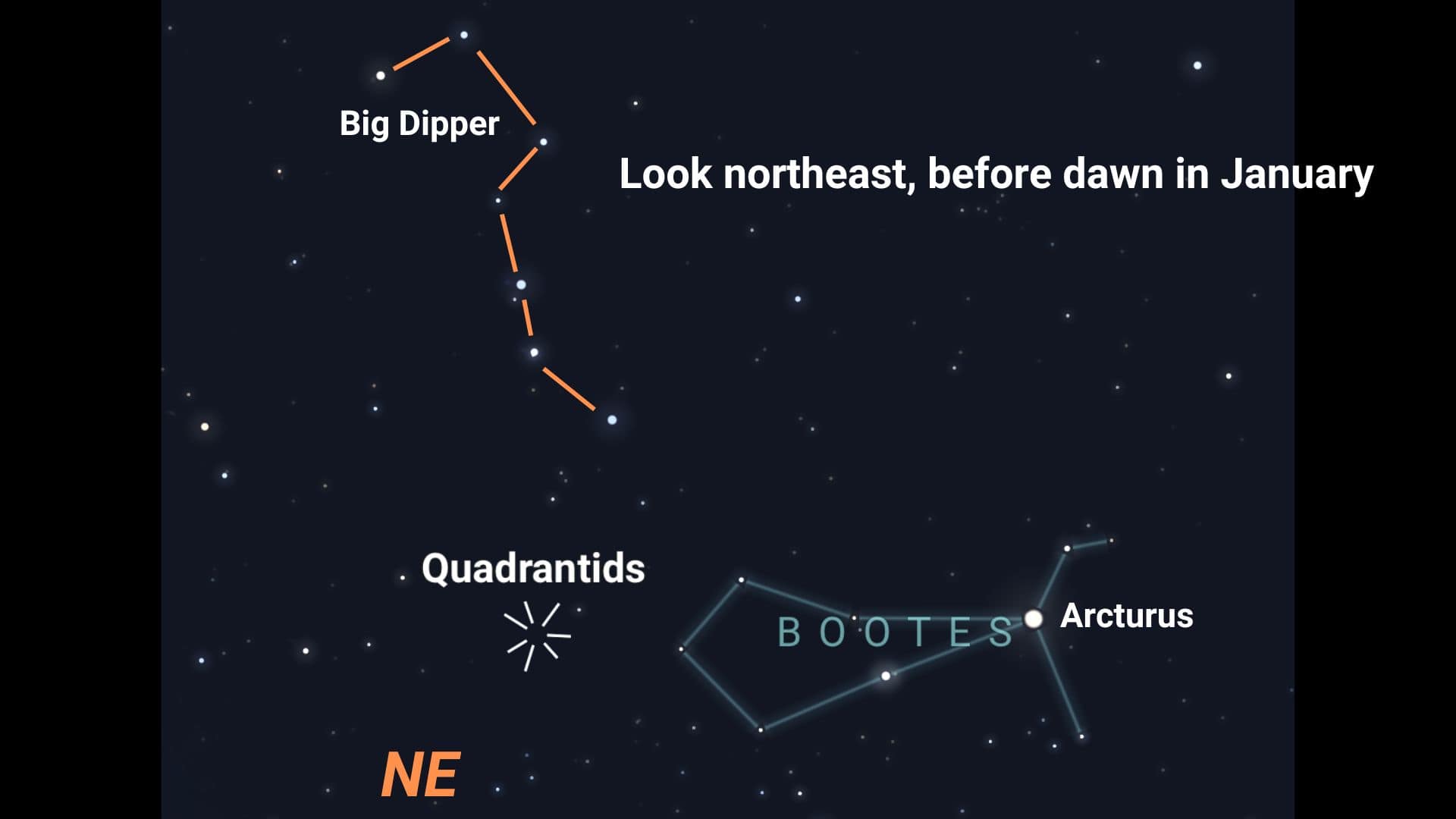
The Quadrantid meteor shower radiates near the end of the handle of the Big Dipper. Look high in the northeastern sky in the pre-dawn hours to spot Big Dipper.
The Big Dipper is one of the most famous star patterns in the night sky. The seven bright stars of Big Dipper form a gigantic question mark that is easily noticeable in the night sky.
Not only the Big Dipper but also the bright star Arcturus can help you to spot the radiant of Quadrantid meteor shower. The shower’s radiant is located to the left of Arcturus.
Arcturus (alpha Bootis) is the brightest star in the constellation Bootes and the fourth brightest star in the night sky. It is easily noticeable in the night sky, even in light-polluted areas.
However, I will suggest you don’t look at the star pattern Big Dipper or the bright star Arcturus only to see the Quadrantid meteor shower, as the meteors closer to the radiant have shorter trails and are difficult to observe. So move your gaze across the entire east, northeast, and north directions of the sky.
Visibility of the Quadrantid meteor shower
The Quadrantid meteor shower is most favorable to observers in the Northern Hemisphere, especially those located in the high-northern latitudes (from 45°N to 60°N).
The radiant of the Quadrantid meteor shower reaches almost overhead in the sky (more than 70° altitude) in the pre-dawn hours when you see the shower from the high-northern latitudes.
It is a big challenge to observe the shower from the Southern Hemisphere, where the radiant never rises much above the horizon.
How the Quadrantid meteor shower got its name
Meteor showers are usually named after a constellation in which the radiant lies during peak activity or after a bright star closest to the radiant.
The Quadrantid meteor shower got its name from the constellation Quadrans Muralis as the shower’s radiant was located in the constellation Quadrans Muralis.
However, Quadrans Muralis is now an obsolete constellation, and the modern constellations Bootes and Draco have taken its place.
Now the radiant of the Quadrantid meteor shower is located in the constellation Bootes. That’s why the shower is alternatively called Bootids or Bootid meteor shower.
How to observe the Quadrantid meteor shower
You don’t need any special equipment, such as a pair of binoculars or a telescope, to see the Quadrantid meteor shower. A meteor shower is best seen with the naked eye.
Find a safe, dark place away from city lights where a large portion of the sky is seen. Lie down or sit on a lawn chair and look straight up at the sky, facing roughly northeast. Bring blankets and sleeping bags to avoid a cold.
It will take around 30 minutes for your eyes to adjust to the darkness, and don’t look at your mobile phone as the bright light from its screen will interrupt your night vision.
Be patient, as the celestial show of the Quadrantid meteor shower will be visible until dawn breaks.
Origin of the Quadrantid meteor shower
Unlike most meteor showers, which originate from comets, the Quadrantid meteor shower originates from the asteroid 2003 EH1, according to NASA.
The asteroid 2003 EH1 has a diameter of about 2.9 km, and it orbits the sun once every 5.5 years. It is believed that the asteroid 2003 EH1 may be fragment of a larger comet.
The Lowell Observatory Near-Earth Object Survey (LONEOS) discovered the asteroid 2003 EH1 on March 6, 2003. Team member Peter Jenniskens compared the orbit of this asteroid with the orbit of the meteoroid stream of Quadrantids and found that they have similar orbits. Peter Jenniskens announced in December 2003 that it is the parent body of the Quadrantids.
According to Jenniskens’ research, the shower is astronomically very young, perhaps 500 years. About that long ago, late in 1490 a comet was recorded by observers in China, Japan, and Korea. In 1979, Ichiro Hasegawa suggested that the Comet of 1490 (called C/1490 Y1) could be related to the Quadrantids. It is possible that the comet broke apart sometime before 1490, releasing the dust that we now see as the Quadrantid meteors and the asteroid 2003 EH1 is a fragment of that comet.
Please bookmark Spaceandtelescope.com or follow us on Facebook and Twitter to get latest space news, upcoming skywatching events and astronomy-related content.
